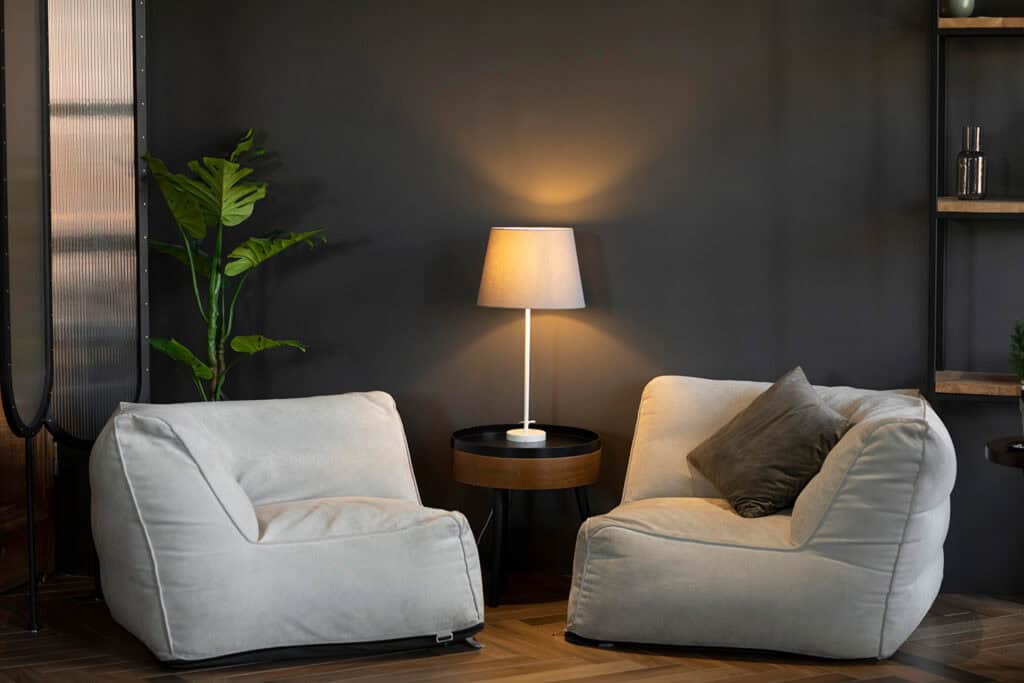
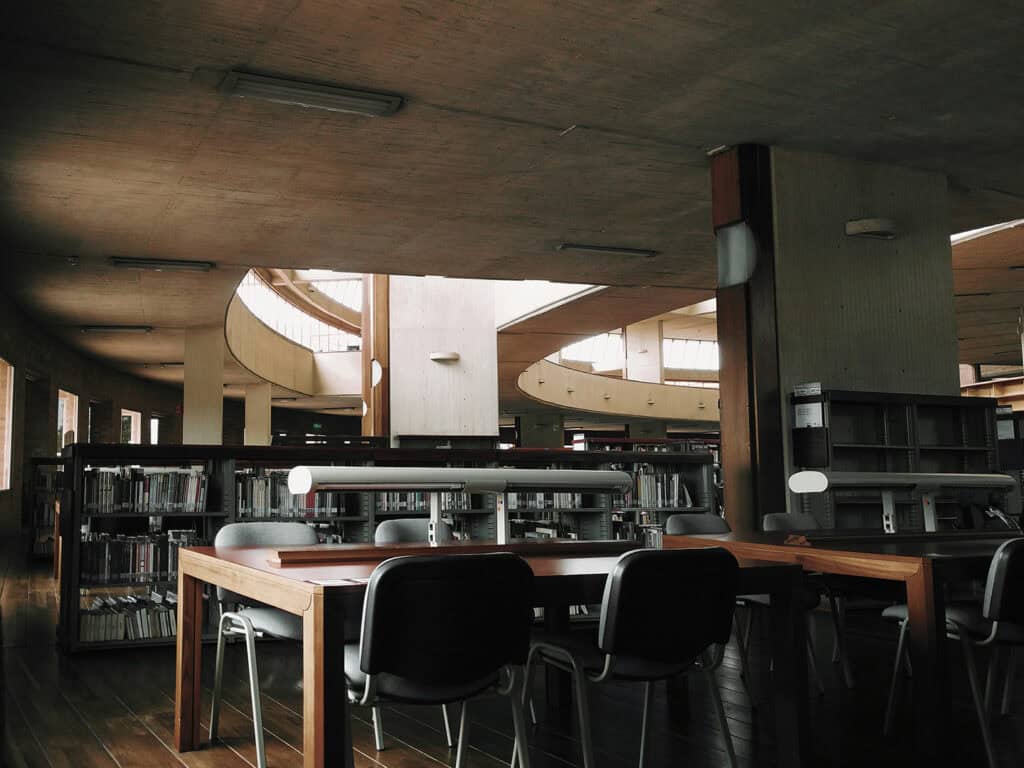
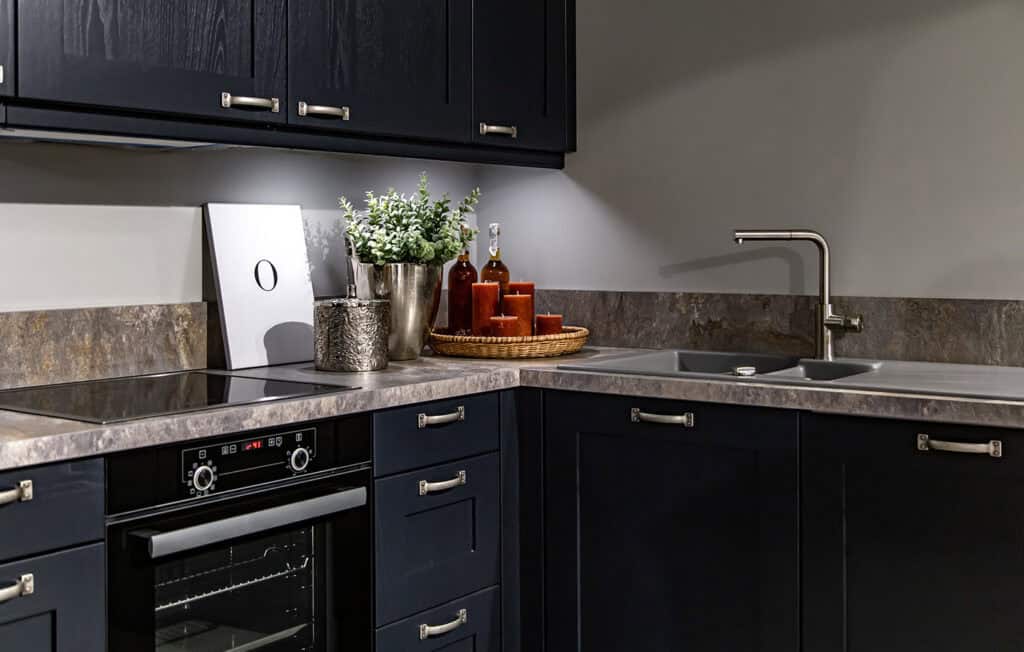
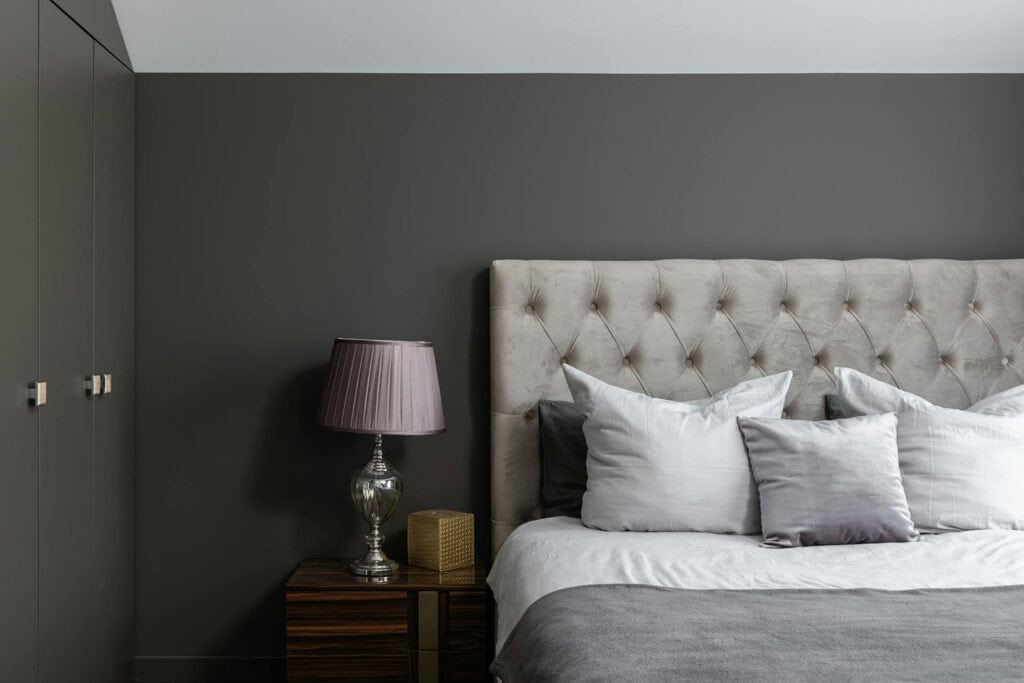
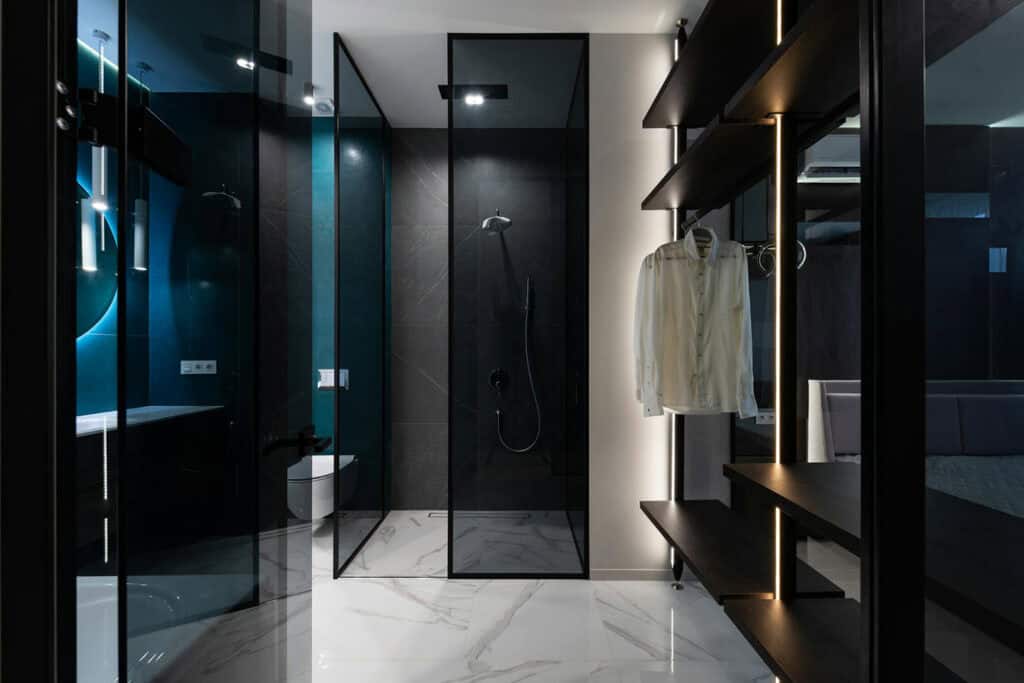
Are you drawn to the bold beauty of deep hues but unsure how to make them work in your space? Dark interior design can be your answer, creating an atmosphere that is both moody and cozy.
At Landmarks Architects, we know that finding the balance between contemporary trends and personal expression can be daunting. With our deep understanding of dark interior design, we’re excited to help you create a space that reflects your personality.
In this article, we will cover:
- Key elements of dark interior design
- How to style dark shades effectively
- Tips for balancing darkness with lighter elements
- Design ideas for different spaces
Ready to elevate your space with the enchanting power of dark hues? Continue reading to discover how to create a stunning interior.
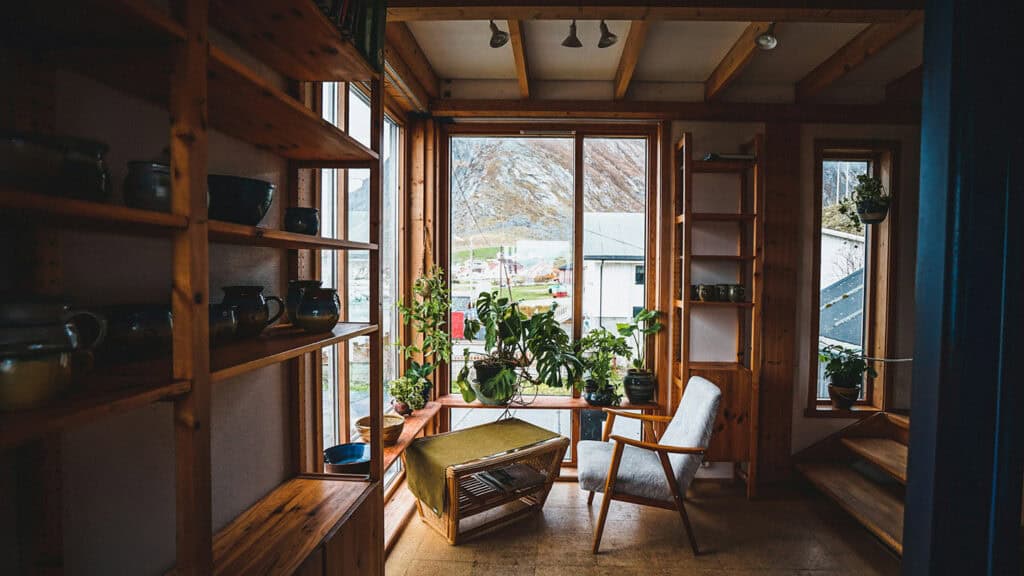
Key Elements of Dark Interior Design
Dark interior design creates an enchanting and cozy atmosphere—a space where every element contributes to an elegant and moody environment. Let’s explore these elements!
1. Color Palette
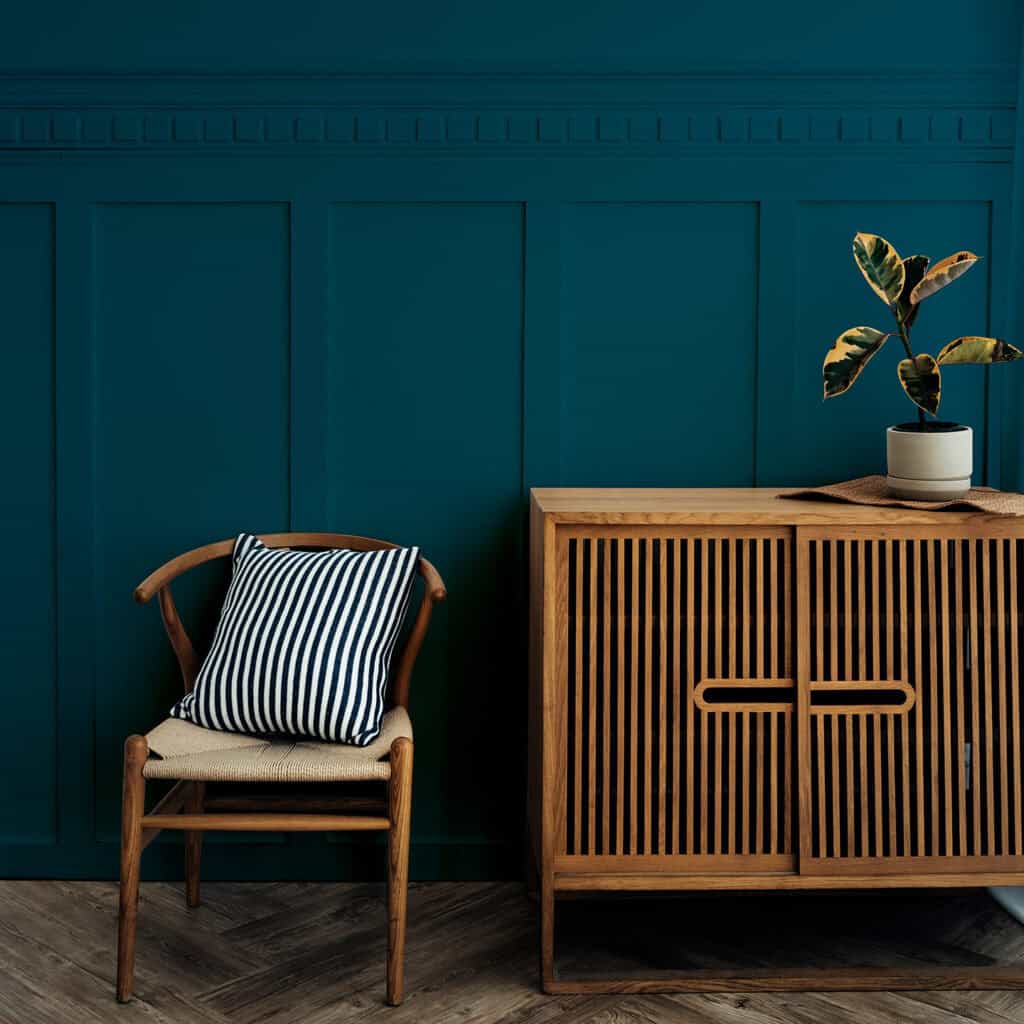
Dark hues like black, charcoal, deep blues, and dark greens form a rich foundation, adding depth to your dark space. Incorporating lighter elements enhances contrast, balancing the dark colors with brightness.
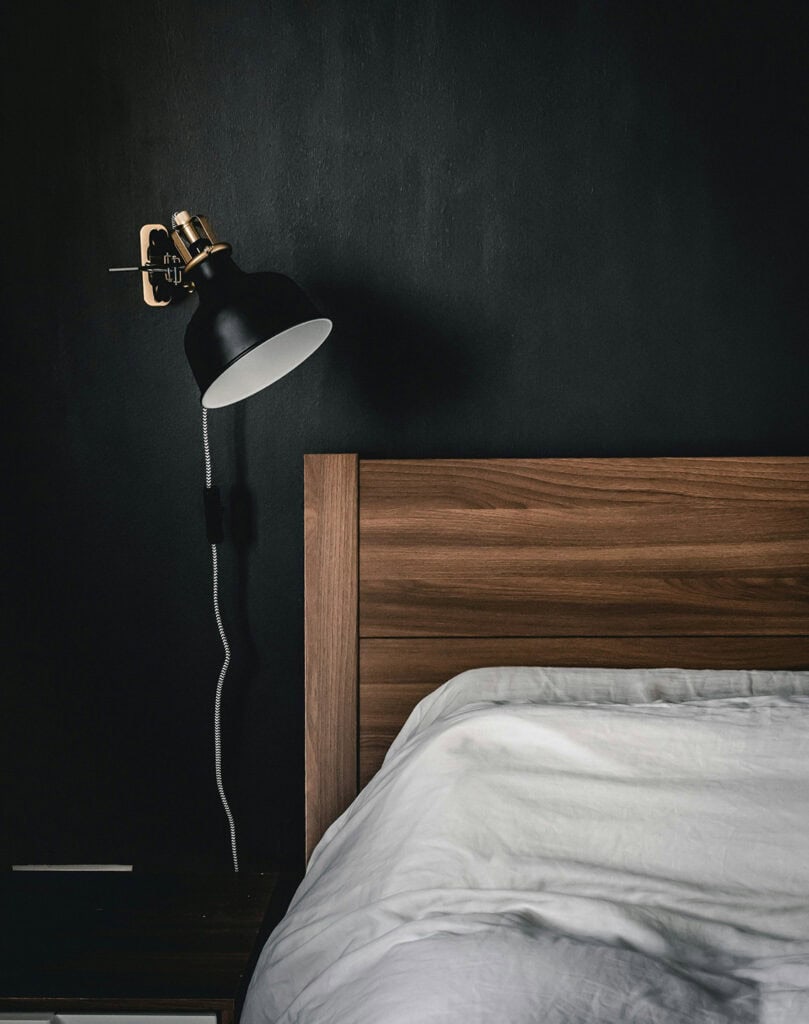
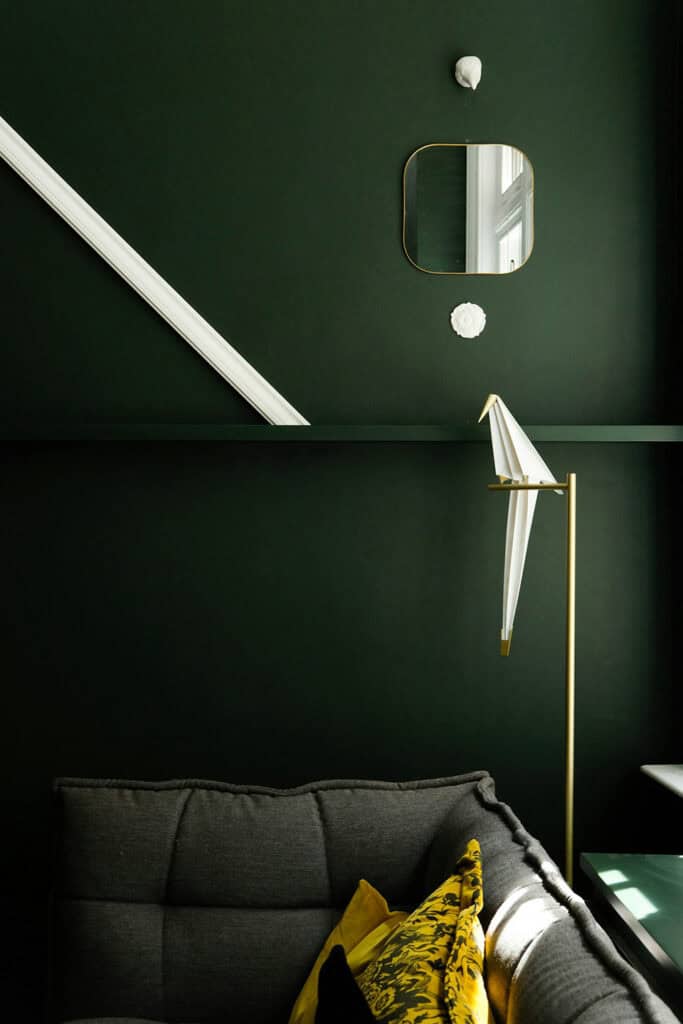
2. Materials and Textures
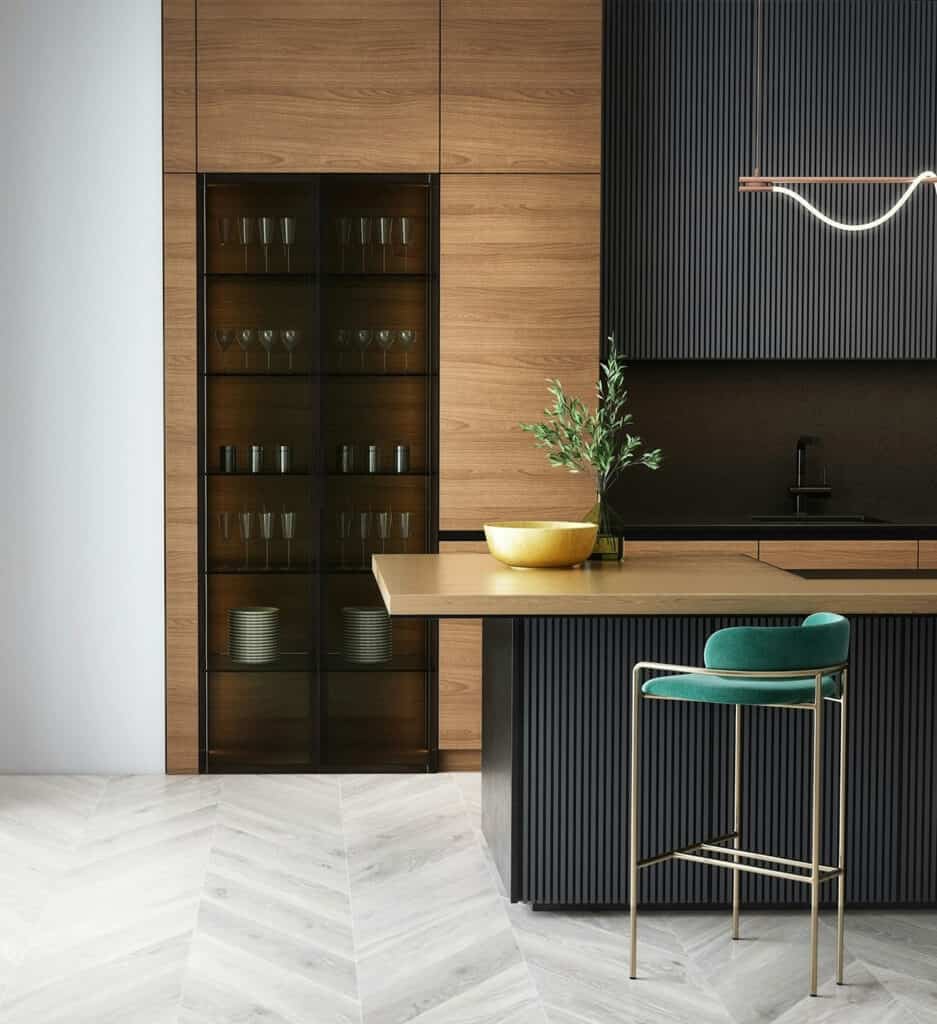
Material choice greatly influences the mood of dark interiors. Luxurious fabrics like dark textiles add elegance, while dark wood introduces warmth. Textures can soften the bold colors, adding dimension to the dark room.
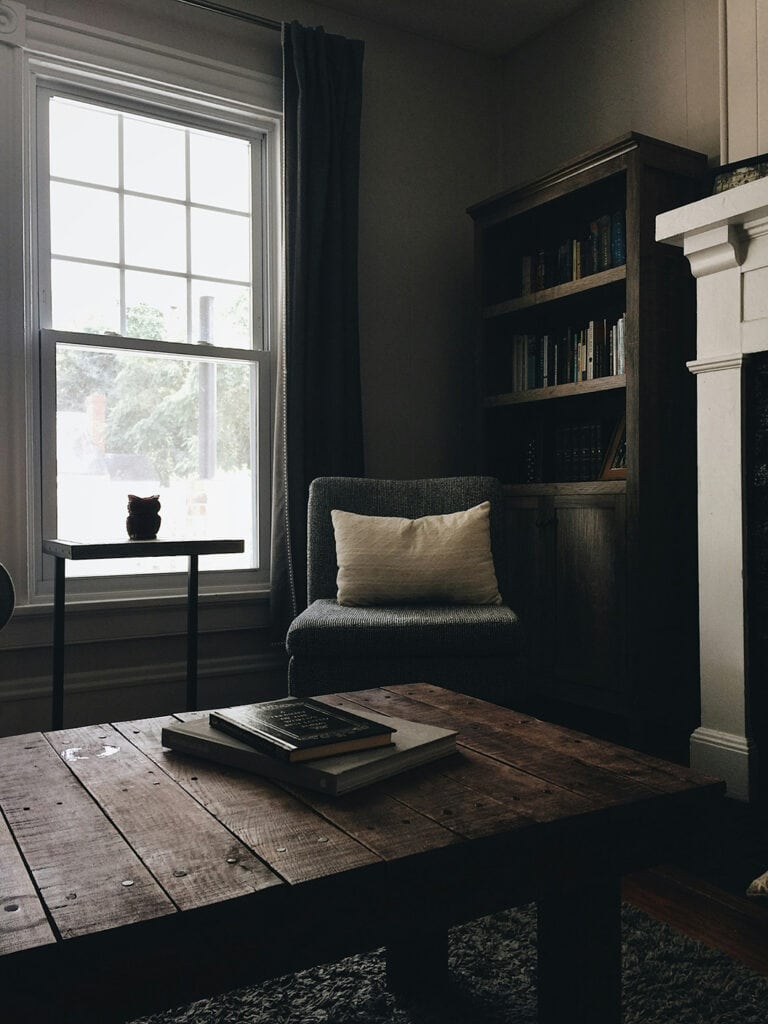
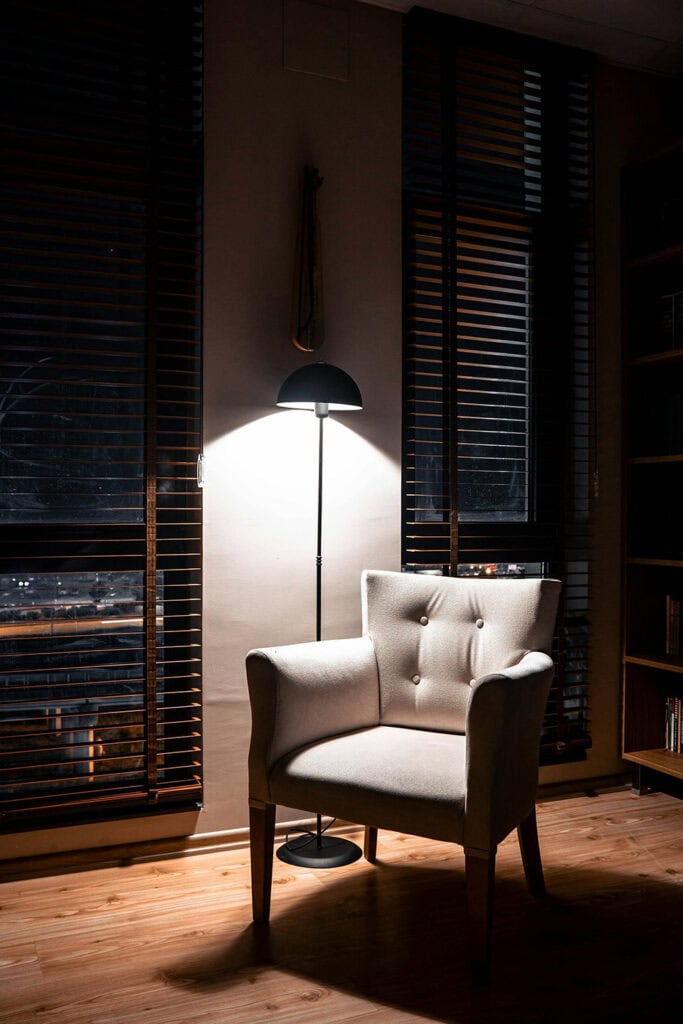
3. Lighting
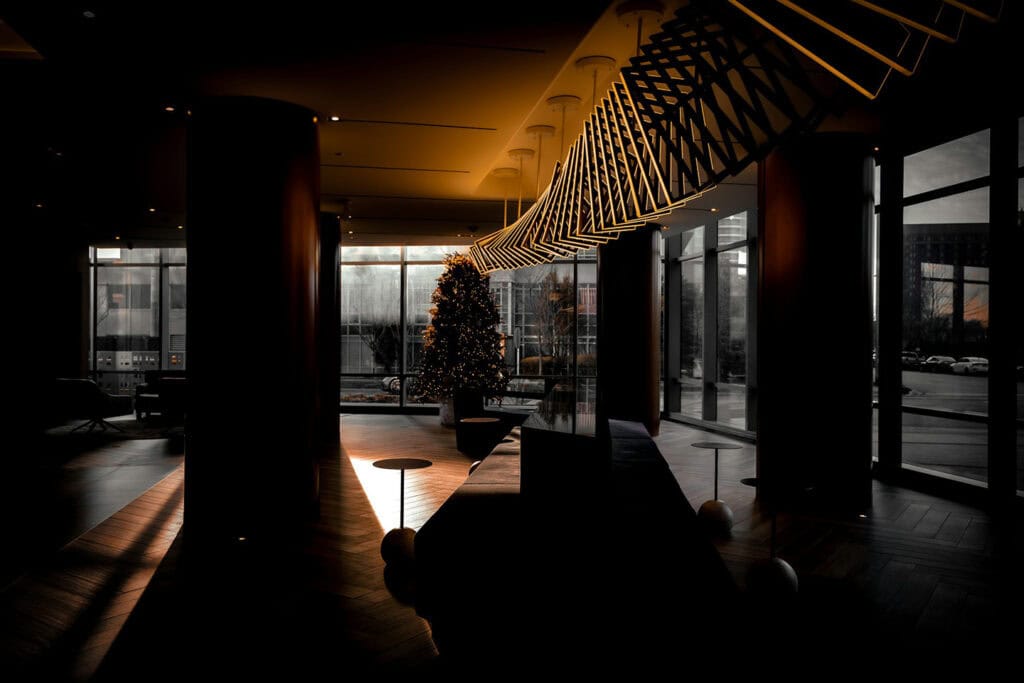
Proper illumination is crucial in dark interior design. Using ambient, accent, and task lighting maintains a lively atmosphere. For instance, dimmer switches allow flexibility, letting you adjust brightness according to your mood and time of day.
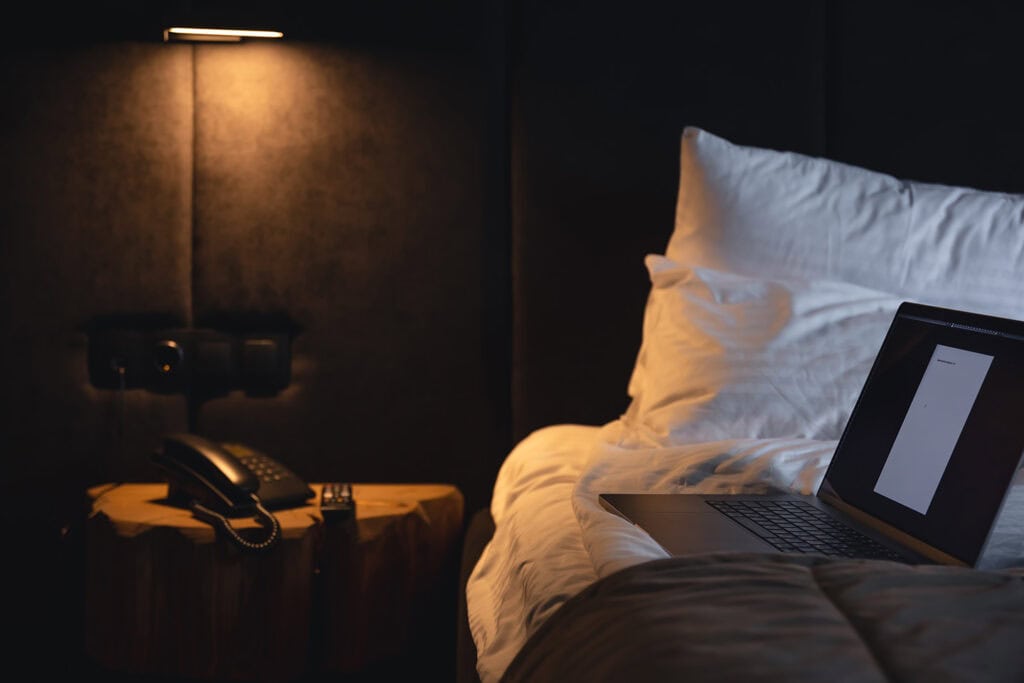
4. Furniture and Decor
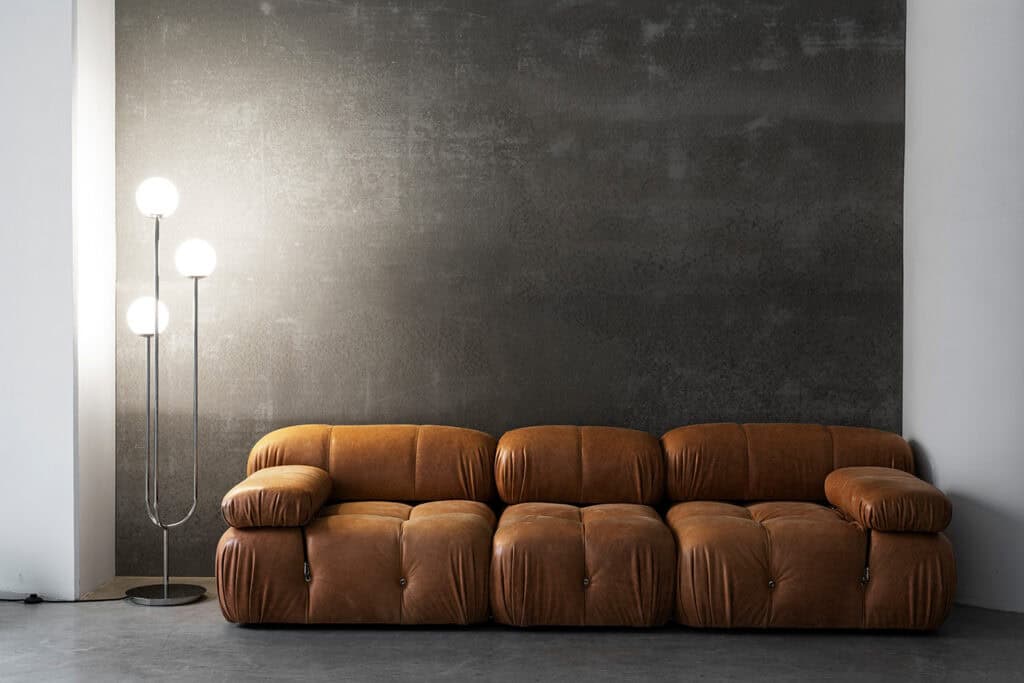
Choose furniture and decor that complement dark interiors. Mixing minimalist designs with statement pieces creates intentional focal points without overwhelming the space. Integrating accessories like throw pillows or artwork in lighter tones allows for a refreshing contrast.

Balancing Dark Interiors
Creating an inviting atmosphere in dark interiors requires careful consideration of contrasting elements, reflective surfaces, and room dimensions. These factors can help to enhance the space while maintaining a cohesive design.
Contrasting with Light
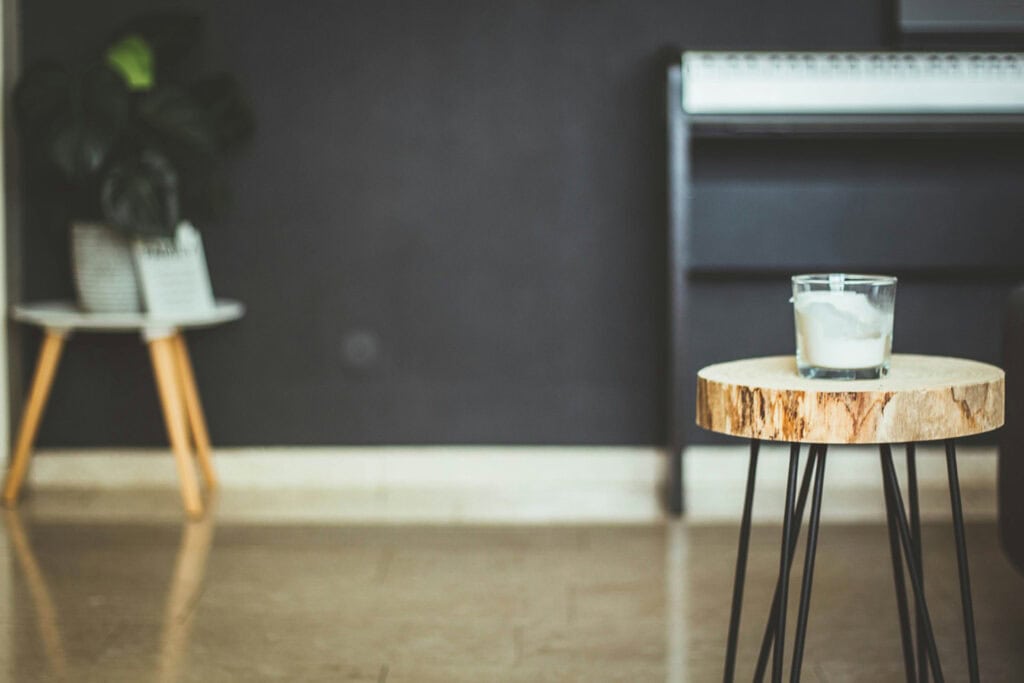
Strategic use of light colors and metallics can effectively balance dark interiors. Incorporating accents like white, beige, or gold introduces brightness and visual interest. For instance, pairing dark walls with light furniture can create a striking contrast.
Metallic finishes on light fixtures or décor items can also add a touch of elegance, making the space feel more open and inviting.
Using Mirrors and Reflective Surfaces
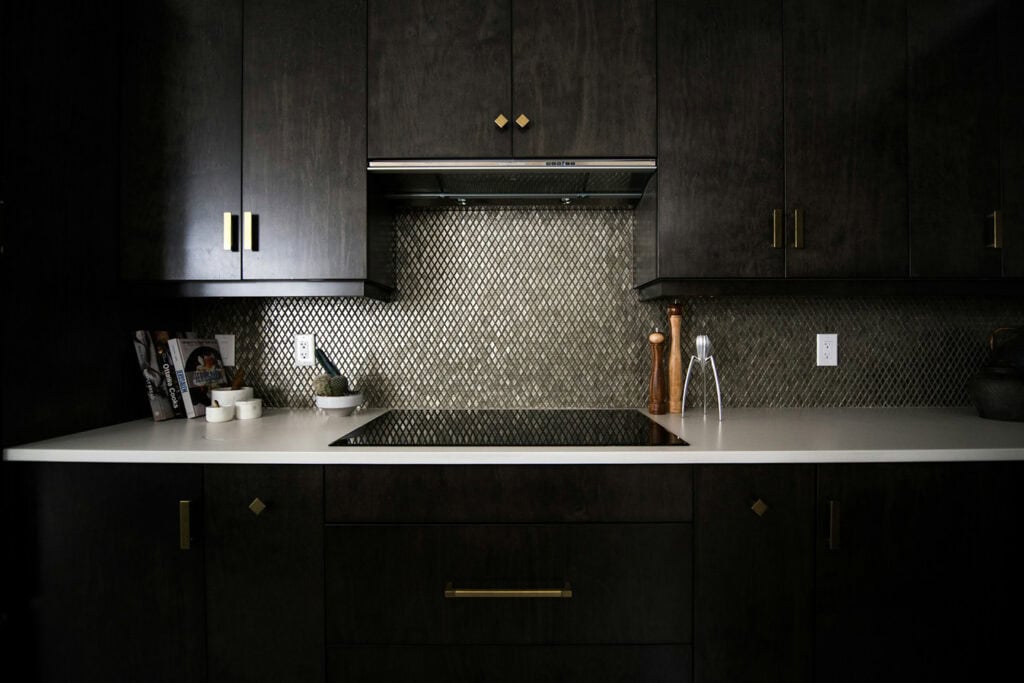
Mirrors and glossy surfaces play a crucial role in brightening dark rooms. They reflect light, which helps to create an illusion of depth and space. A well-placed mirror can enhance natural light coming from windows, amplifying its effect throughout the room.
Glossy finishes on furniture or decorative accents can also catch light, contributing to a more vibrant atmosphere. It’s important to position these elements thoughtfully to maximize their impact.
Small Spaces
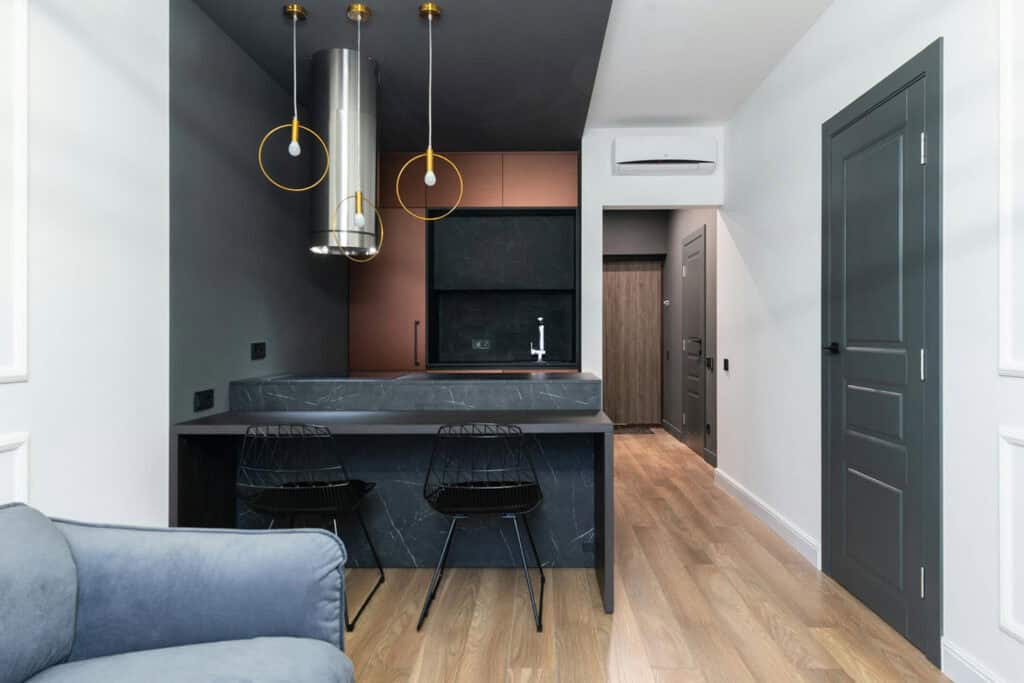
In small rooms, dark colors can create depth without making the space feel cramped. To use dark shades effectively, one approach is to paint one or two walls in a deep hue while keeping the rest lighter.
Light-colored trim or accessories can also help maintain a sense of openness, ensuring the dark elements enhance rather than constrict the space.
High Ceilings

Dark walls can make high ceilings feel cozier and more intimate. This design choice draws the eye upward, highlighting the architectural features of the room. For instance, painting the ceiling in a darker shade than the walls can create a unified look, making the height feel less imposing.
Dark Color Ideas for Every Room
Incorporating dark colors into various spaces can enhance mood and create a sense of depth. The following sections include dark interior design ideas for effectively using dark hues in living rooms, bedrooms, kitchens, and bathrooms to achieve the desired aesthetics and functionality.
Living Rooms
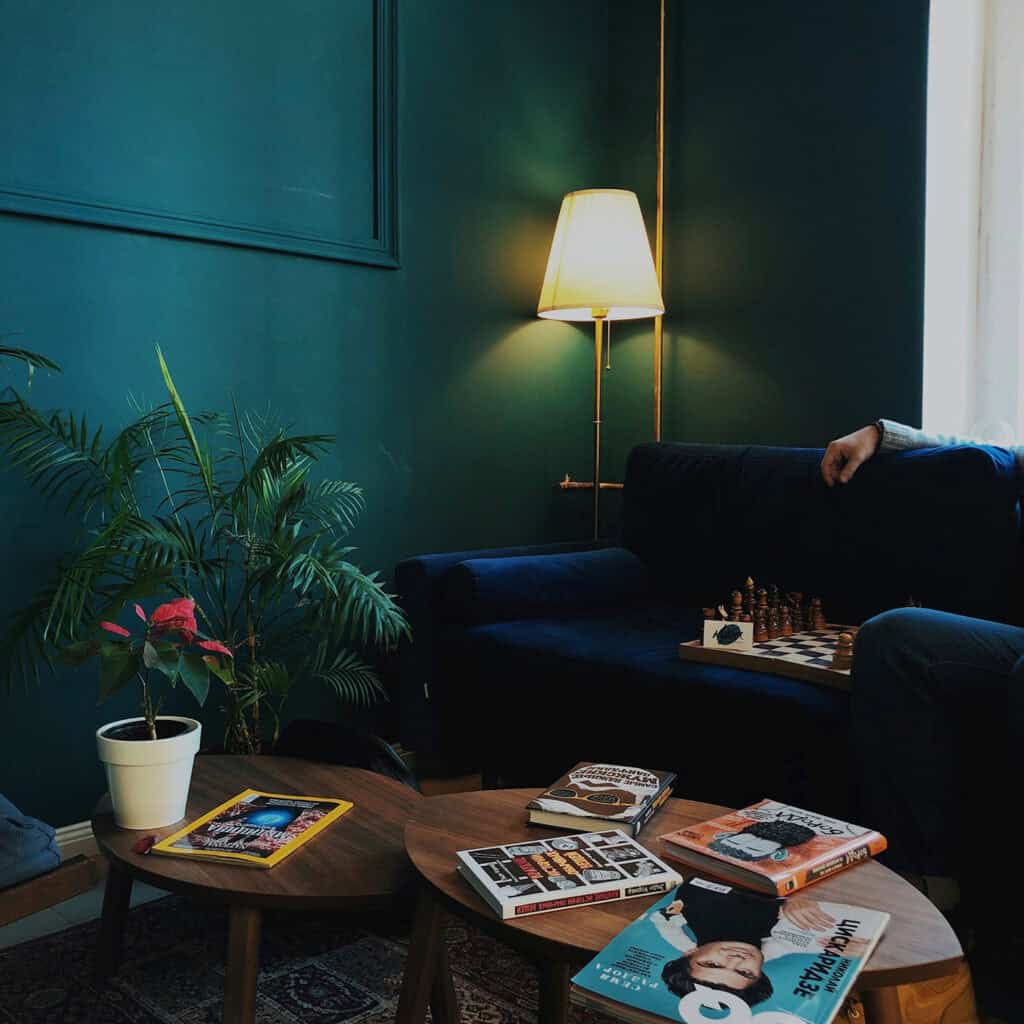
- Apply deep charcoal or navy for a cozy vibe.
- Add cream throw pillows or light wooden furniture.
- Use different fabrics and layered lighting.
- Choose glass coffee tables to bounce light.
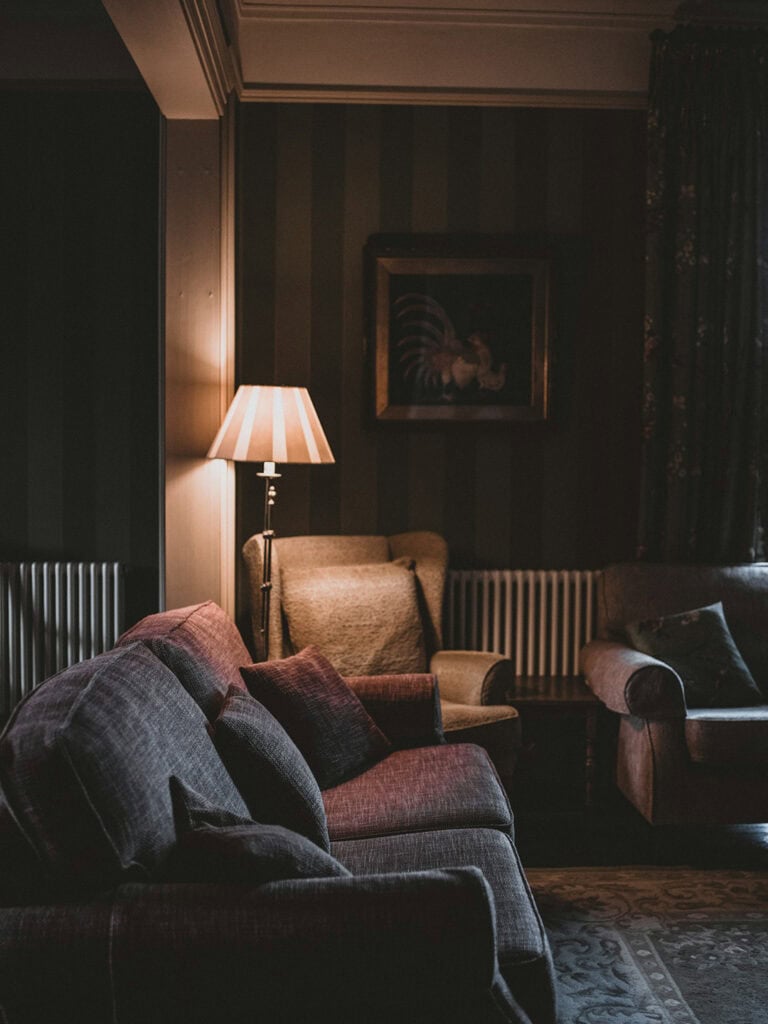


Bedrooms
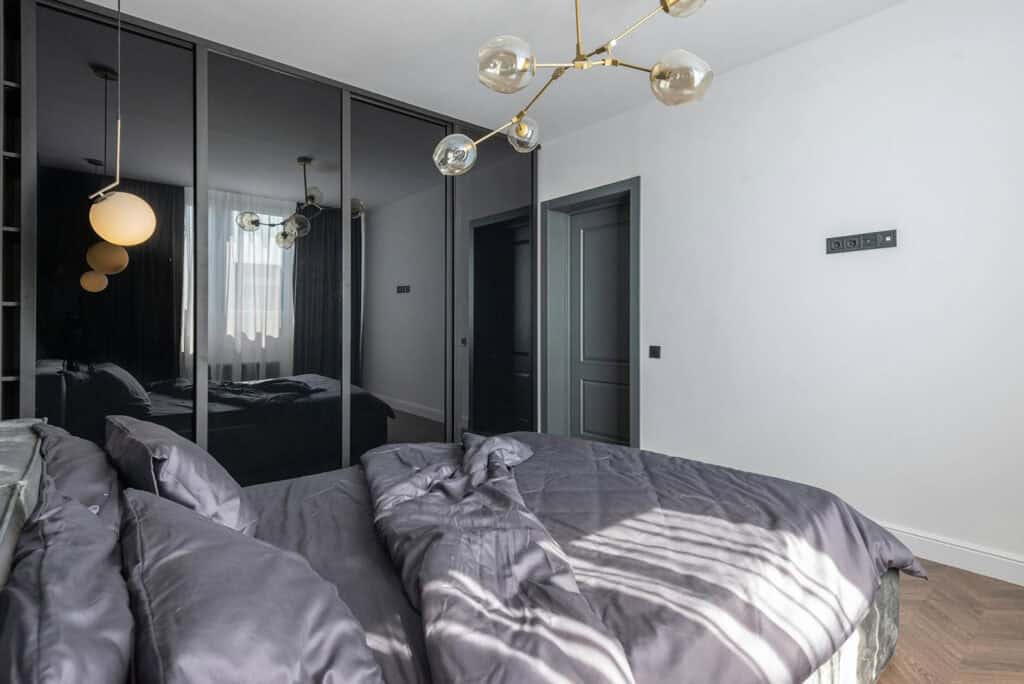
- Design bedrooms with deep blues and blacks for a restful feel.
- Incorporate white linens or soft furnishings for contrast.
- Use dimmer switches to create a cozy ambiance.
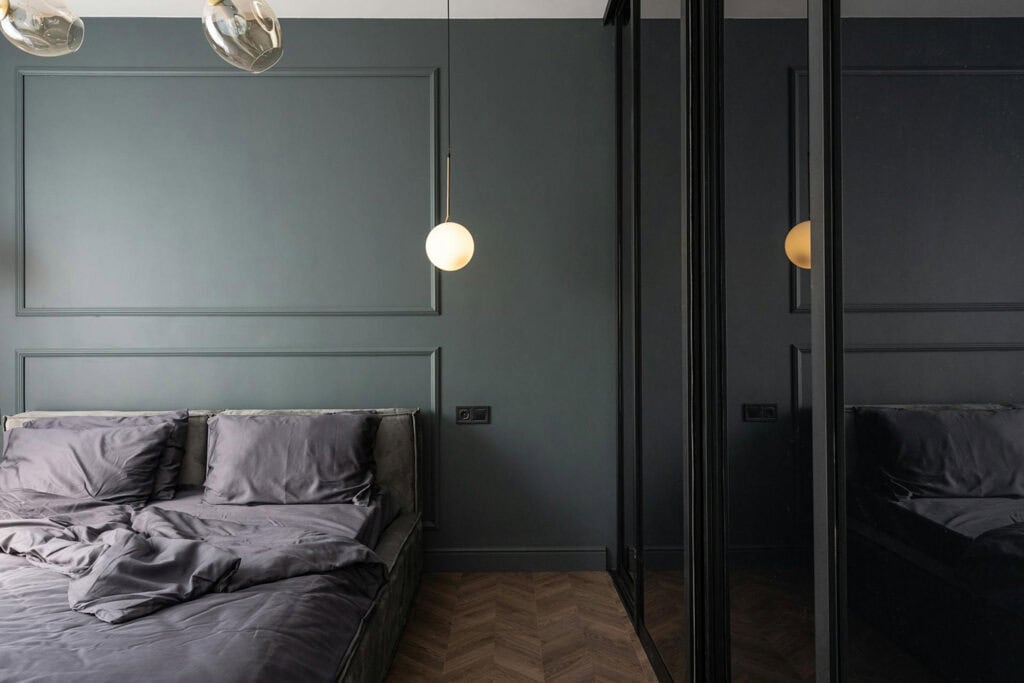

Kitchens

- Choose dark colors for cabinets and tiles for a sleek look.
- Matte black or rich brown enhances the kitchen’s sophistication.
- Use light countertops and metallic accents alongside dark cabinets for added brightness.
- Use windows and skylights to brighten the space.
- Use open shelving with light-colored dishes for balance.
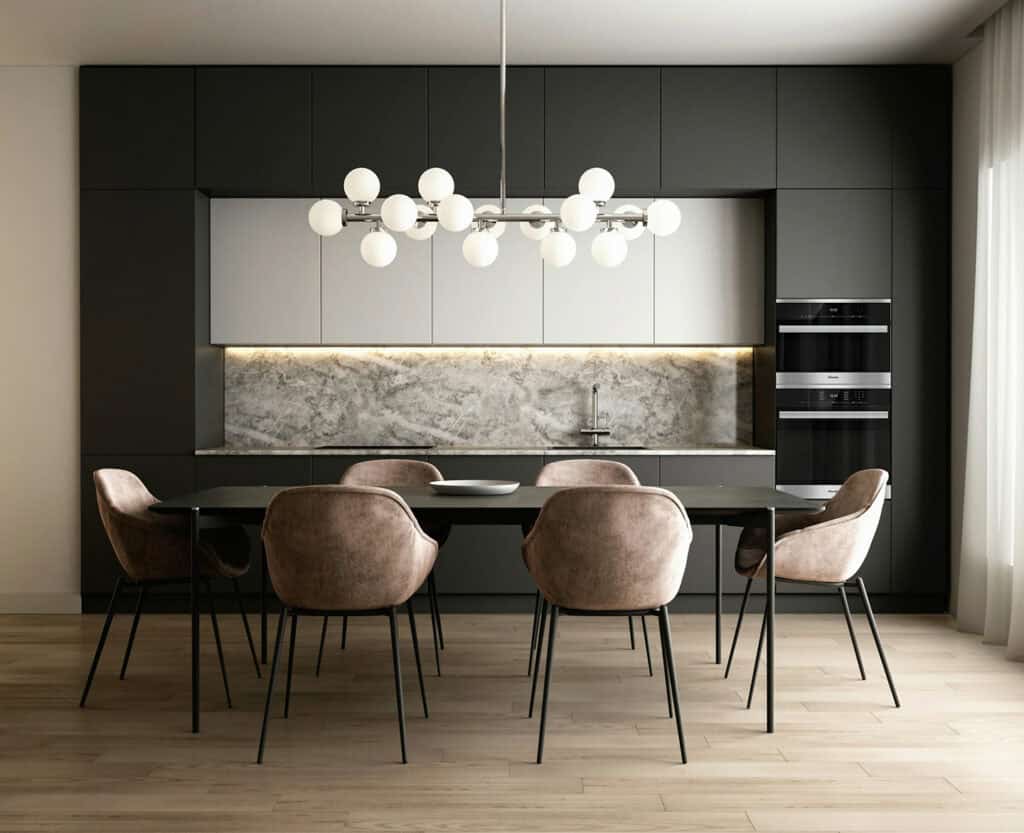
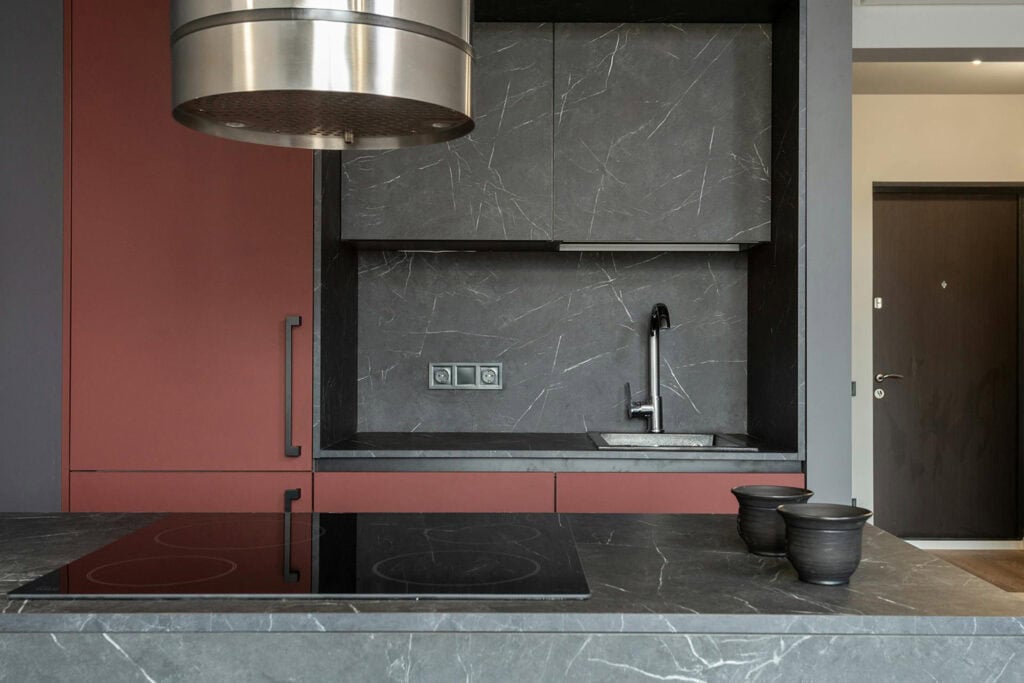
Bathrooms
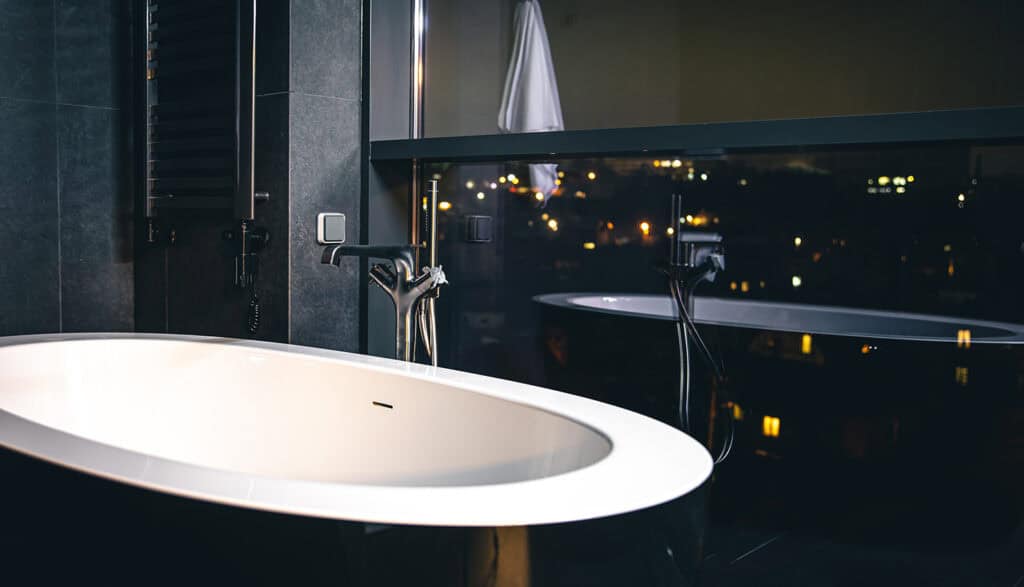
- Apply rich tiles or black paint for a spa-like feel.
- Pair dark shades with warm beige or muted pastels.
- Use reflective surfaces like glossy finishes or mirrors.
- Implement dimmable fixtures to adjust the mood.
- Keep dark interiors relaxing while feeling open and inviting.

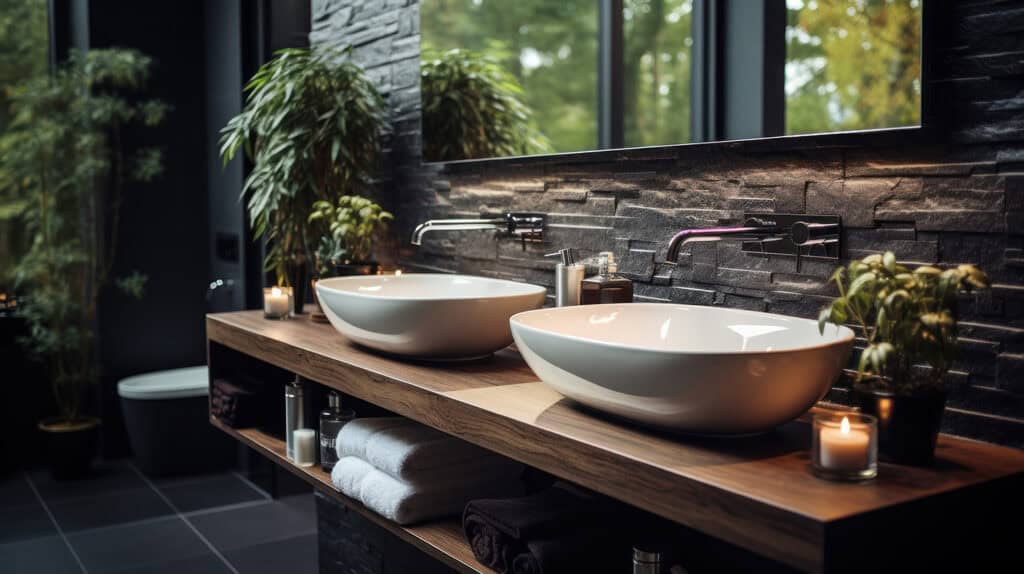
See also Brutalist Interior Architecture: 5 Essential Traits
Dark Interior Design: A Recap
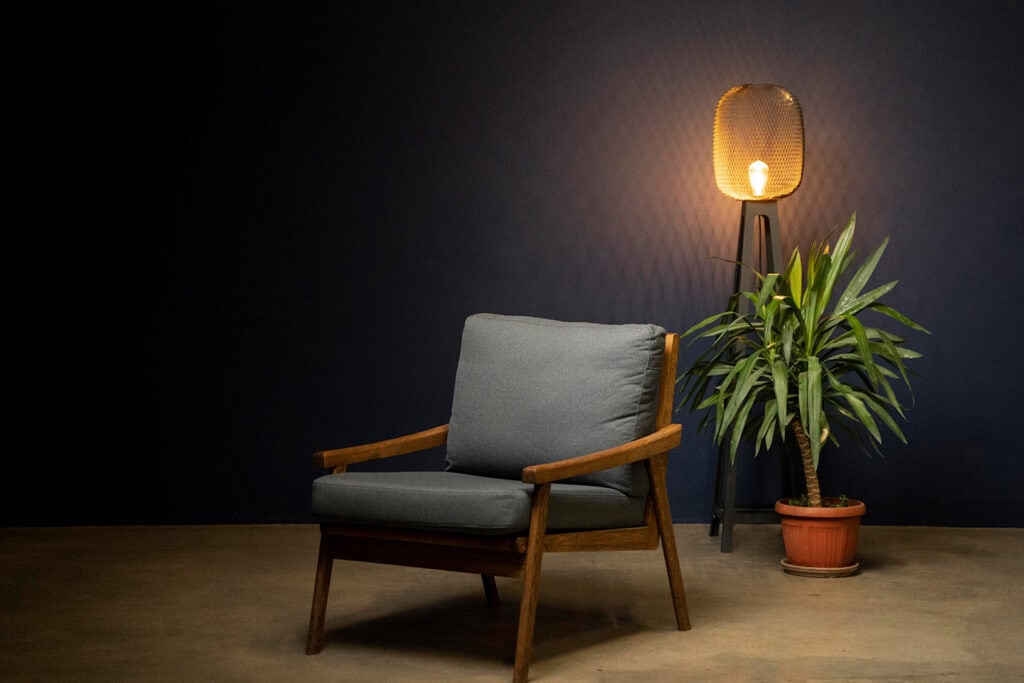
Dark interior design profoundly influences modern spaces, offering a unique aesthetic that enhances visual interest. Embracing this trend in homes or commercial spaces, including Dark Academia Interior Design, allows for personal expression and creativity.
A dark color can evoke distinct emotions, transforming any area into a moody yet cozy dark space.
These designs often promote a calming effect, encouraging relaxation and comfort. Incorporating lighter tones or reflective surfaces can balance the intensity, achieving a modern dark interior design.
Ready to transform your space? Start experimenting with these dark interior design ideas today!










